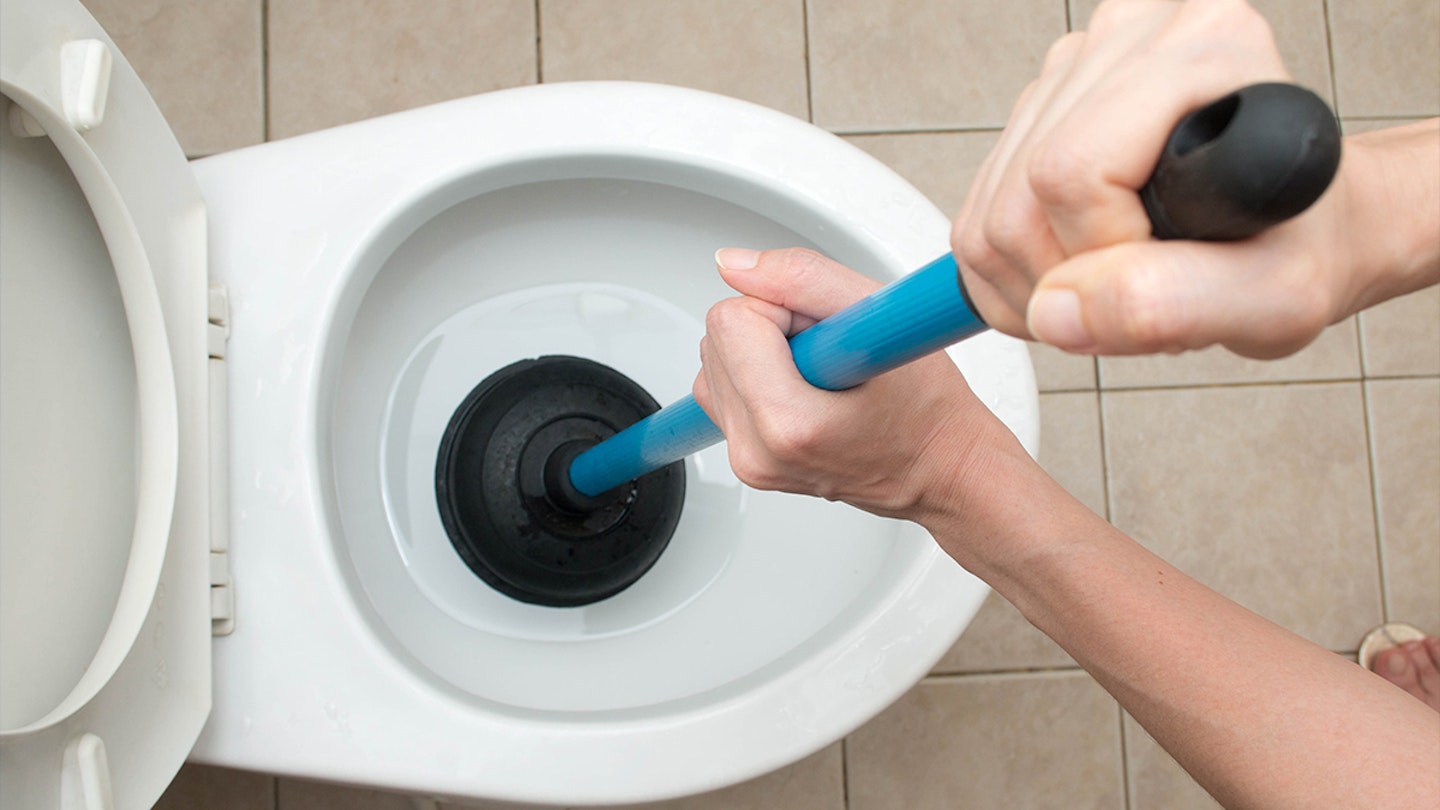If you have a blockage in your toilet, sink or shower drain, a plunger will likely do the job and will save you from calling the plumber. While it may not fix all plumbing issues, a plunger is an easy and accessible first step to take before you call for assistance.
Here is how to use a plunger like a pro and what measures you should take before attempting to unclog a drain.
What is a plunger and how does it work?
A plunger has a long handle with a large rubber cup at the end. If used properly a plunger can unclog pipes, sinks and toilets and have them run more efficiently.
While the design of a plunger is simple, it is a very useful tool. When the plunger is pressed down, over a clog, it forces air into the drain and increases pressure. When the clog moves, the air will continue to move through the pipes. When pulling the plunger back up it creates a vacuum and forces whatever is in the pipe upwards.

The different types of plunger
The two most common plunger styles are the cup plunger and the flange plunger. It would be a good idea to have one of each and be familiar with what they are best used for so you can determine which one’s right to use in any plumbing mishap.
1. Cup plunger
The main trope of a plunger is the rubber cup. The cup plunger is designed to work with flat-surface drains such as in the sink, shower or bathtub. The cup plunger will not work as well in a toilet drain as it cannot create an airtight seal around the toilet to create a vacuum.
Just so you know, whilst we may receive a commission or other compensation from the links on this page, we never allow this to influence product selections.

2. Flange plunger
If your toilet is clogged it is best to use a flange plunger as it has an additional ring of rubber (the flange) around the cup. The flange is used by placing it into the toilet drain, sealing in the air which increases the suction.

How to use a plunger in your toilet
If your toilet is blocked, the best plunger to use in this circumstance would be a flange plunger. Here's how to use it correctly if your toilet becomes blocked:
- When your toilet looks like it is about to overflow, check to see if the flapper valve in your toilet tank is down and wait about ten minutes.
- After ten minutes, turn off the water supply hose on your toilet (this can normally be found on the wall behind the toilet).
- If the toilet still looks like it will overflow, then remove some of the water using a bucket or cup.
- The water level must reach a halfway level to the brim so it can completely cover the cup of your rubber plunger. If the water level is too low, add some more water to fill the toilet bowl around halfway. The plunging will be more effective if you have the right amount of water.
- Using a plunger, make sure the flange is out from the inside of the cup. As you put your plunger in the water, the cup should be covered with water, and the rubber ring of the flange should be inserted into the drain opening in the bowl to create suction.
- Apply even pressure, pushing and pulling vertically for about 20 seconds. Avoid breaking the “seal” with the drain and keep the plunger in the water.
In this video tutorial, you can see first-hand how to use a plunger to unclog a clogged toilet.
How to use a plunger for a sink, shower, or bathtub
When using a standard cup plunger start by covering the overflowing drain with a wet towel.
This prevents air from escaping and decreasing the suction. It is also a good idea to seal off any nearby drains in sinks, shower or bath to ensure it works properly.
Tip: If you choose to use drain-clearing chemicals, you mustn't use a plunger at the same time. By doing so, you risk splashing around harsh, toxic substances that can cause burns or if they come in contact with your eyes, can cause blindness.
Here is a video on how to unclog a blocked sink with a plunger and no chemicals
Popular articles to read next
[Easy cleaning tips that you need to know! ](https://www.yours.co.uk/life/home/cleaning-tips/ng-tips/ )
[The easiest and best way to clean shower glass ](https://www.yours.co.uk/life/home/best-way-to-clean-shower-glass/r-glass/)
